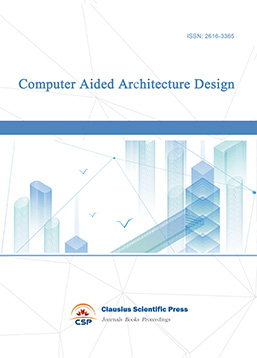Ventilation Simulation and Gas Safety Risk Assessment for Non Coal on Gas Tunnel Construction
DOI: 10.23977/jceup.2023.051104 | Downloads: 53 | Views: 1309
Author(s)
Jun Gao 1,2, Qianda Zhou 3
Affiliation(s)
1 Department of Transportation of Inner Mongolia Autonomous Region, Hohhot, Inner Mongolia, 010010, China
2 National Railway Group Wu Guang High Railway Company, Wuhan, Hubei, 430212, China; Department of Civil Engineering, Tsinghua University, Haidian, Beijing, 100083, China
3 National Railway Group Wu Guang High Railway Company, Wuhan, Hubei, 430212, China
Corresponding Author
Jun GaoABSTRACT
The construction of underground tunnels generally includes characteristics such as large scale, difficult conditions, long construction period, and strong concealment. Therefore, in the construction of subway tunnels, there are often safety issues that affect the quality of the entire project. In the process of underground tunnel construction, various factors that affect its safety should be carefully analyzed based on engineering practice, and scientifically and reasonably selected to ensure the safety and quality of the entire project. At the junction of tunnels and gas tunnels, it is necessary to correctly apply safety management measures for gas tunnel construction, prevent gas accidents, strengthen the effectiveness of safety management measures, and enhance ventilation stability during construction. This article aims to address the above issues and construct a gas safety risk assessment system based on the NCM (normal cloud model). The experiment has proven that the safety risk assessment and discrimination results of gas leakage in the system are III-IV, which is consistent with the reality of high oil and gas content at the construction site, susceptibility to gas overflow, and high risk of tunnel excavation.
KEYWORDS
Gas Safety Risk, Construction Ventilation, Construction of Non Coal on Gas Tunnels, Gas LeakageCITE THIS PAPER
Jun Gao, Qianda Zhou, Ventilation Simulation and Gas Safety Risk Assessment for Non Coal on Gas Tunnel Construction. Journal of Civil Engineering and Urban Planning (2023) Vol. 5: 26-33. DOI: http://dx.doi.org/10.23977/jceup.2023.051104.
REFERENCES
[1] Kraidi L, Shah R, Matipa W. An investigation of mitigating the safety and security risks allied with oil and gas pipeline projects. Journal of Pipeline Science and Engineering, 2021, 1(3): 349-359.
[2] Ping Xie, Yi Wu, Changjun Li. Research progress on pipeline transportation technology of hydrogenmixed natural gas. Oil & Gas Storage and Transportation, 2021, 40(4): 361-370.
[3] Song Z, Ye W, Chen Z. Wireless self-powered high-performance integrated nanostructured-gas-sensor network for future smart homes. ACS nano, 2021, 15(4): 7659-7667.
[4] Liu J, Zhou H, Wang W. Study of the Diffusion Law of Harmful Gases in Tunnel Construction on Plateaus and Optimization of Ventilation Parameters. ACS omega, 2022, 7(31): 27135-27148.
[5] Jiang Z, Wang Y, Men L. Ventilation control of tunnel drilling dust based on numerical simulation. Journal of Central South University, 2021, 28(5): 1342-1356.
[6] Li Z, Wang J, Zhao S. The effect of oxygen supply and oxygen distribution on single-head tunnel with different altitudes under mixed ventilation. Indoor and Built Environment, 2022, 31(4): 972-987.
[7] Liu C, Cheng H, Nie W. Study on smoke propagation in tunnel construction of a hydropower station: A full-scale fire experiment. Journal of Safety Science and Resilience, 2023, 4(2): 188-202.
[8] Liu R, Jiang D, Chen J. Blasting dust diffuse characteristics of spiral tunnel and dust distribution model: similar experiment and numerical modeling. Environmental Science and Pollution Research, 2023, 30(18): 52340-52357.
[9] Niu J, Zheng Q, Lv D. Numerical simulation of the effect of air-intake on the indoor flow field of a dedusting equipment cabin used in tunnel construction. Alexandria Engineering Journal, 2022, 61(12): 12405-12416.
[10] Shepherd J, Monson A. Ventilation on demand: Smarter road tunnel ventilation. Air Quality and Climate Change, 2021, 55(1): 53-56.
[11] Zhu M, Zhu H, Guo F. Tunnel condition assessment via cloud model‐based random forests and self‐training approach. Computer‐Aided Civil and Infrastructure Engineering, 2021, 36(2): 164-179.
[12] Zhang L, Chen W. Multi-criteria group decision-making with cloud model and TOPSIS for alternative selection under uncertainty. Soft Computing, 2022, 26(22): 12509-12529.
[13] Cheng W, Dong F, Tang R. Improved combination weighted prediction model of aquifer water abundance based on a cloud model. ACS omega, 2022, 7(40): 35840-35850.
[14] Dou F, Wei Y, Huang Y. A cloud model-based method for passenger flow control at subway stations: A real-world case study. Journal of Intelligent & Fuzzy Systems, 2023, 44(4): 6103-6115.
[15] Lai X, Zeng C, Su Y. Vulnerability assessment of coastal wetlands in Minjiang River Estuary based on cloud model under sea level rise. Acta Oceanologica Sinica, 2023, 42(7): 160-174.
[16] Nie R, Tian Z, Sang C. Implementing healthcare service quality enhancement using a cloud-support QFD model integrated with TODIM method and linguistic distribution assessments. Journal of the Operational Research Society, 2022, 73(2): 207-229.
[17] Yang L, Yu K, Yang X. An intelligent trust cloud management method for secure clustering in 5G enabled internet of medical things. IEEE Transactions on Industrial Informatics, 2021, 18(12): 8864-8875.
[18] Tavana M, Soltanifar M, Santos-Arteaga F J. Analytical hierarchy process: Revolution and evolution. Annals of Operations Research, 2023, 326(2): 879-907.
[19] Rahmalisa U, Febriani A, Irawan Y. Detector leakage gas lpg based on telegram notification using wemos D1 and Mq-6 sensor. Journal of Robotics and Control (JRC), 2021, 2(4): 287-291.
[20] Field R A, Derwent R G. Global warming consequences of replacing natural gas with hydrogen in the domestic energy sectors of future low-carbon economies in the United Kingdom and the United States of America. International Journal of Hydrogen Energy, 2021, 46(58): 30190-30203.
| Downloads: | 10852 |
|---|---|
| Visits: | 358376 |
Sponsors, Associates, and Links
-
Journal of Sustainable Development and Green Buildings

-
Landscape and Urban Horticulture

-
Bridge and Structural Engineering

-
Soil Mechanics and Geotechnical Engineering

-
Journal of Municipal Engineering

-
Heating, Ventilation and Air Conditioning

-
Indoor Air Quality and Climate

-
Computer Aided Architecture Design


 Download as PDF
Download as PDF